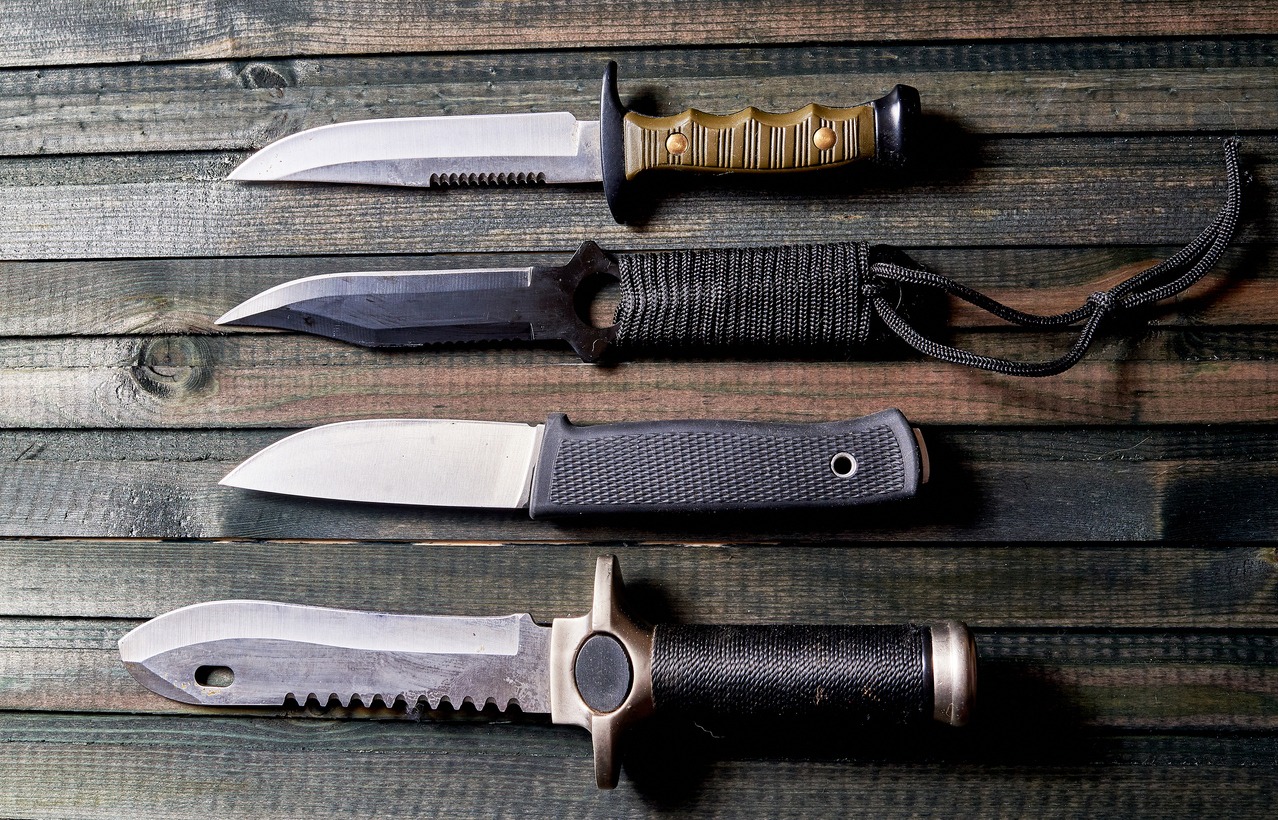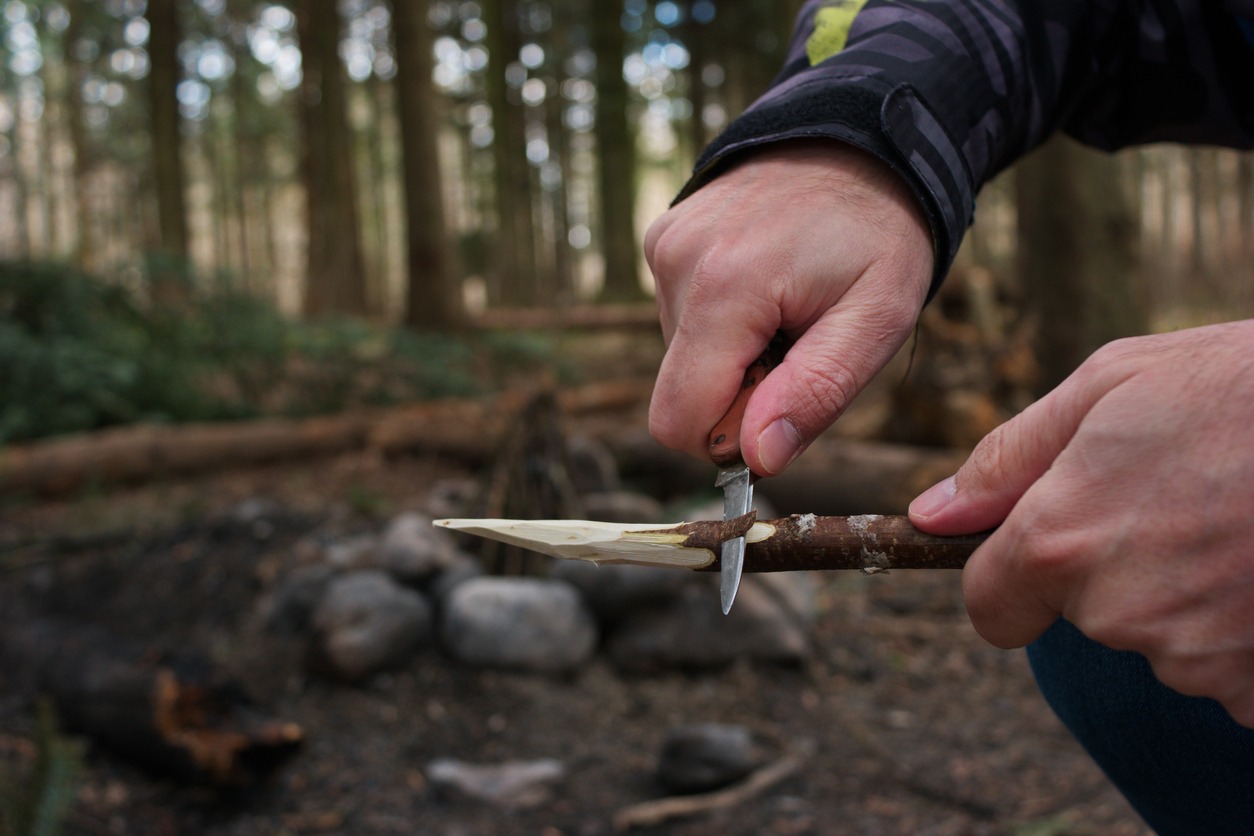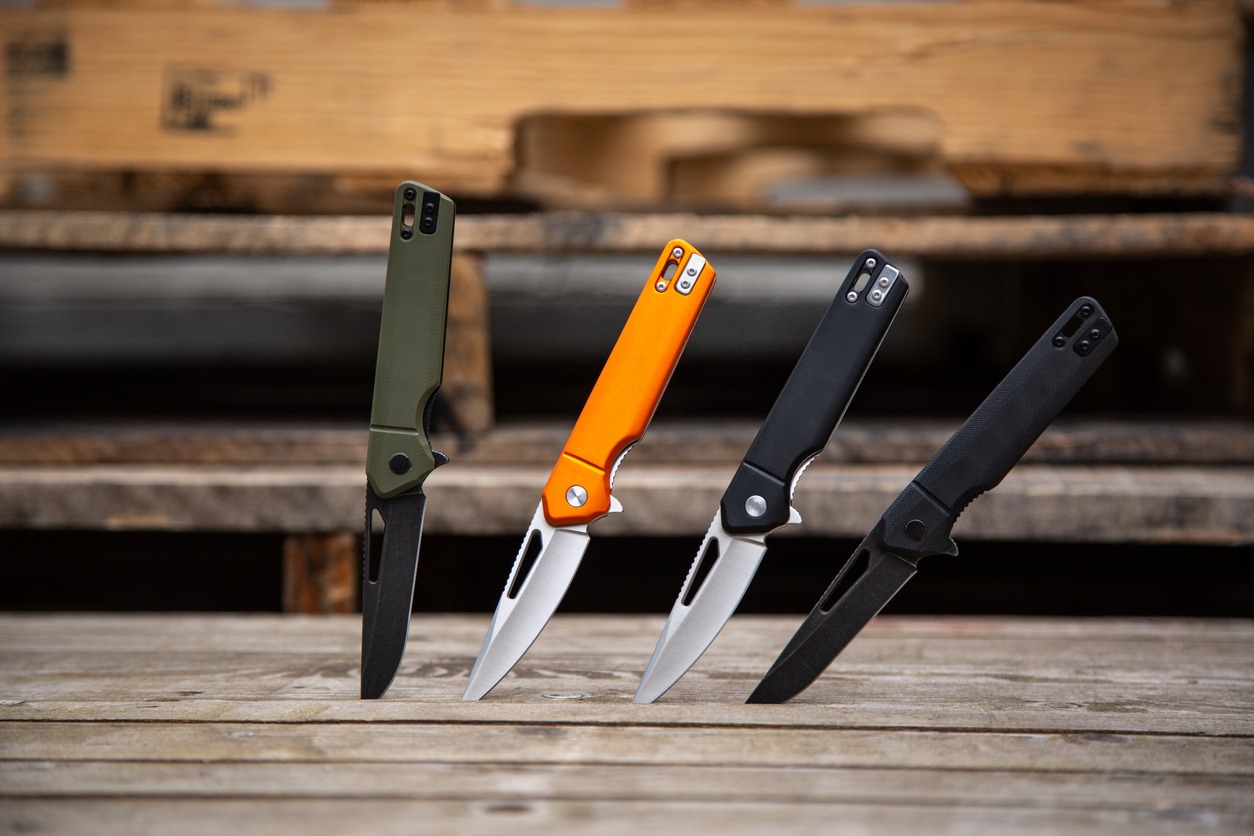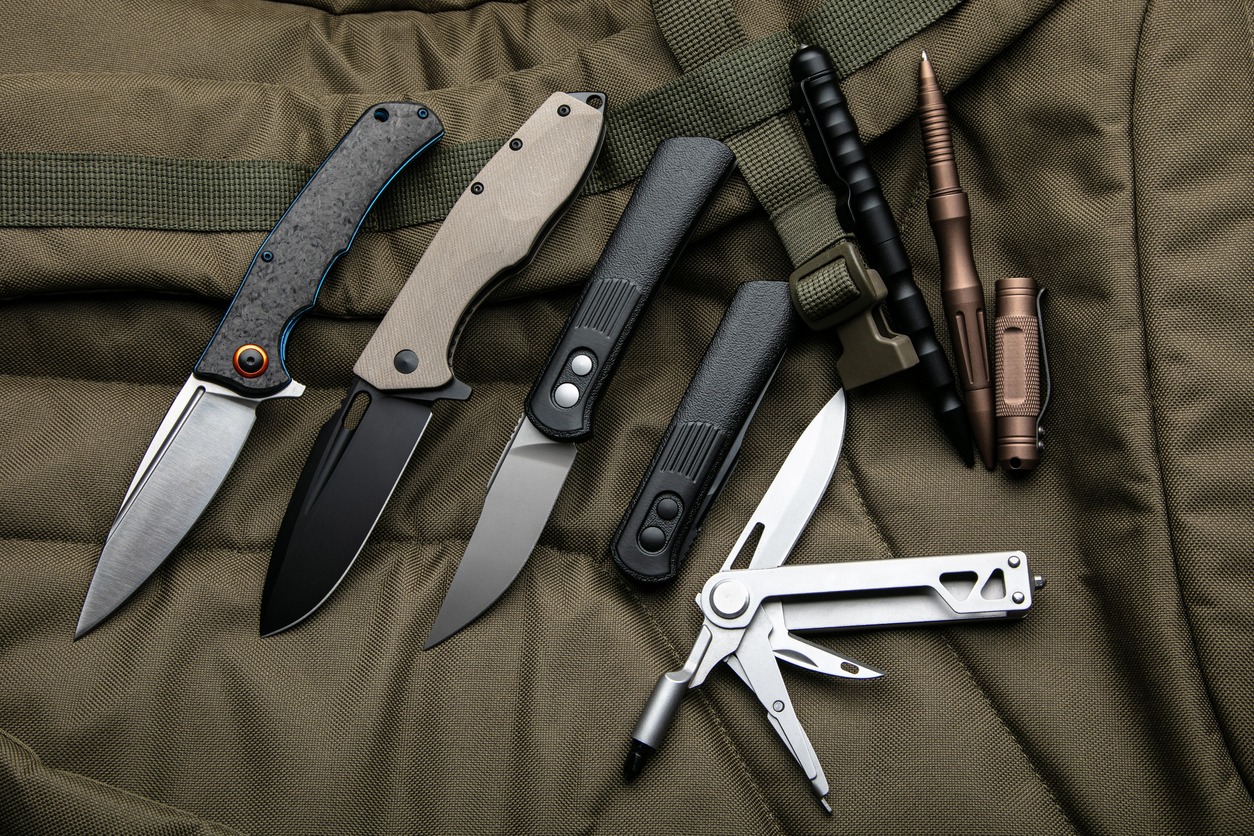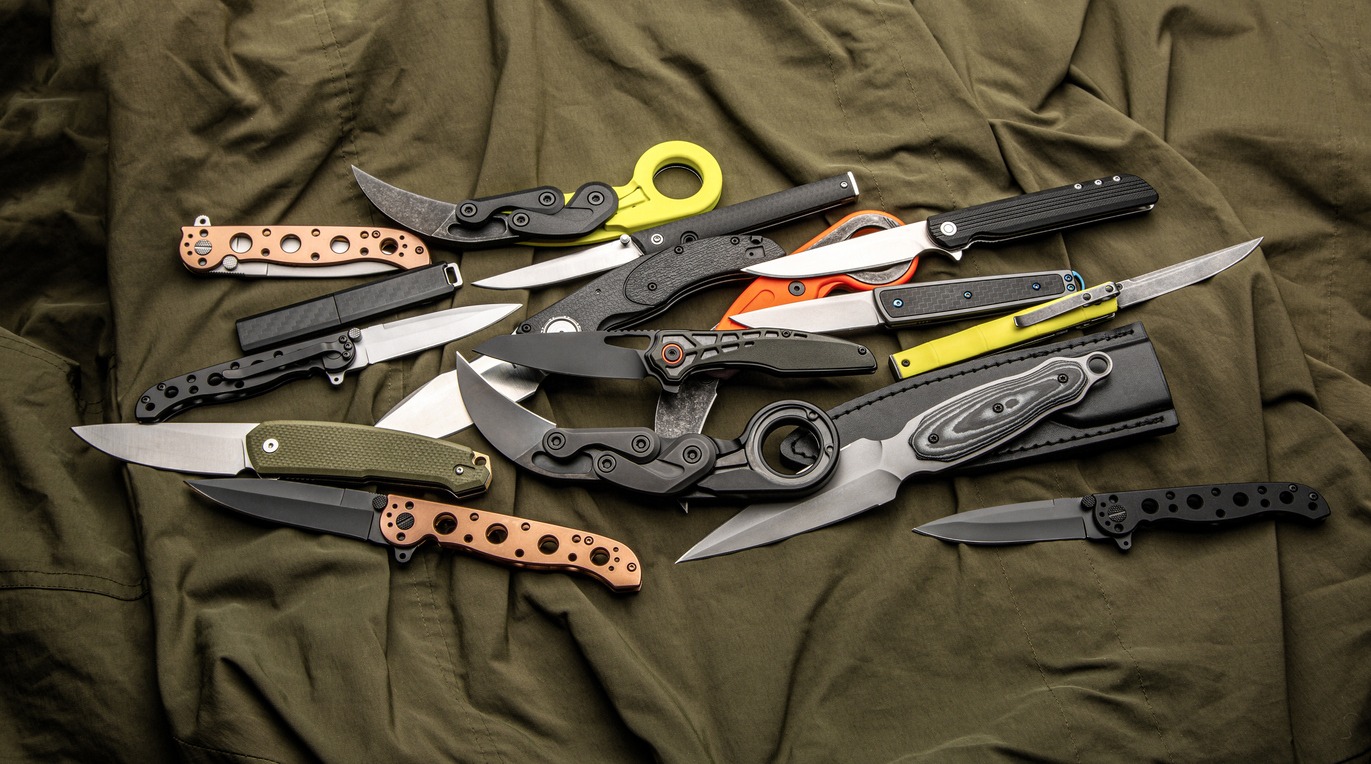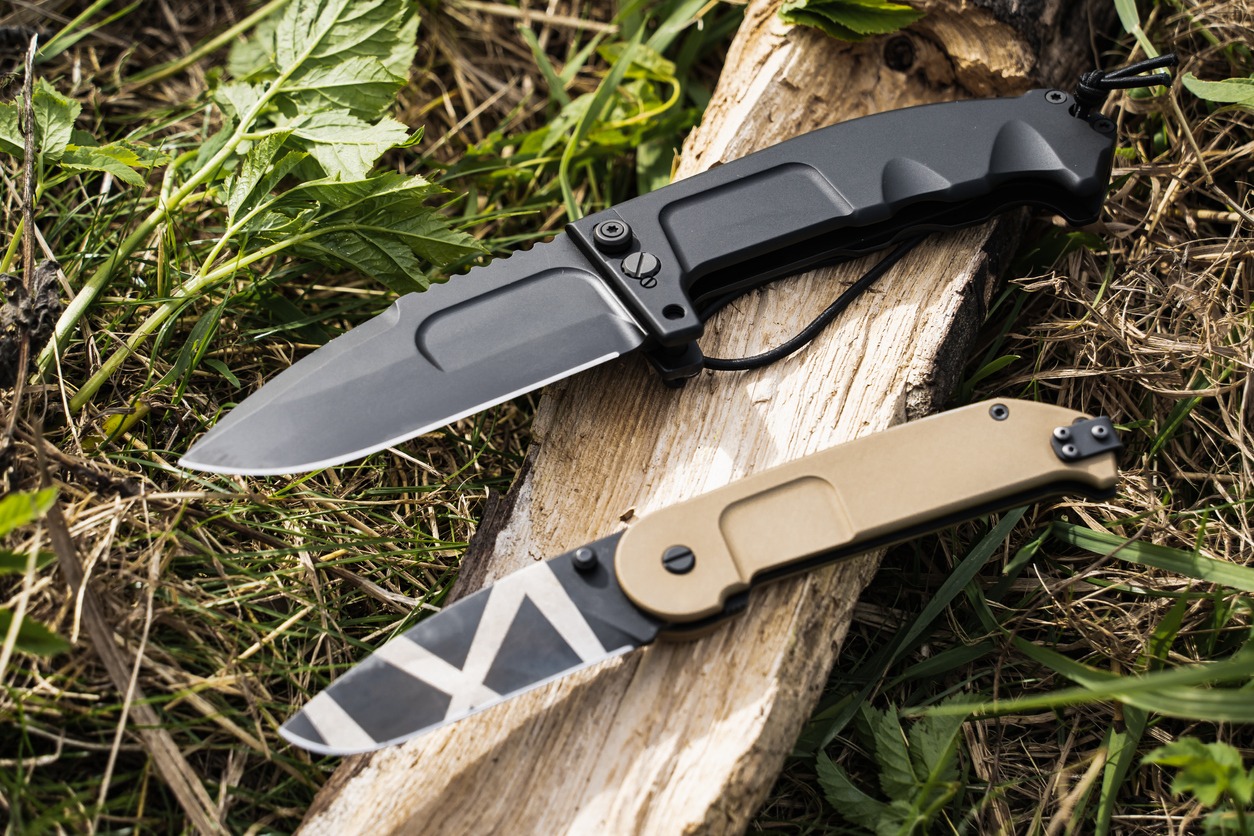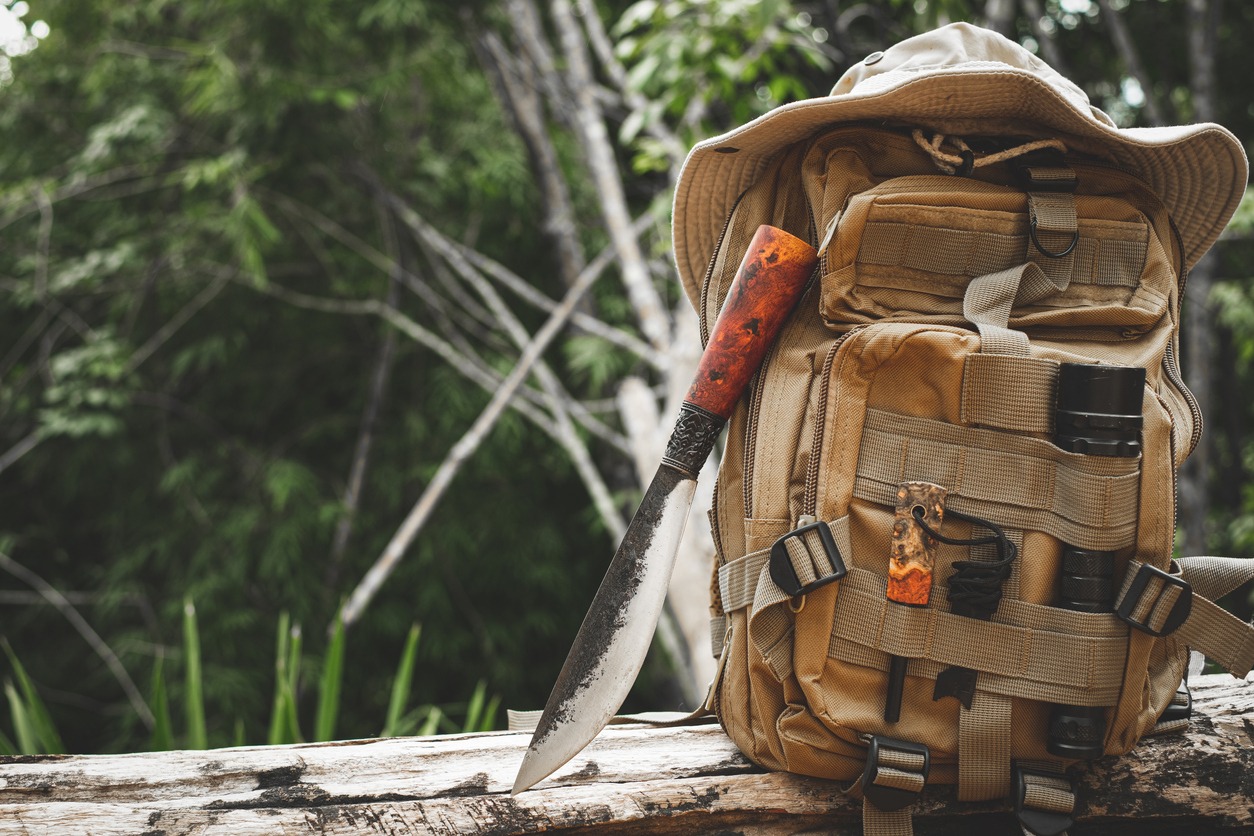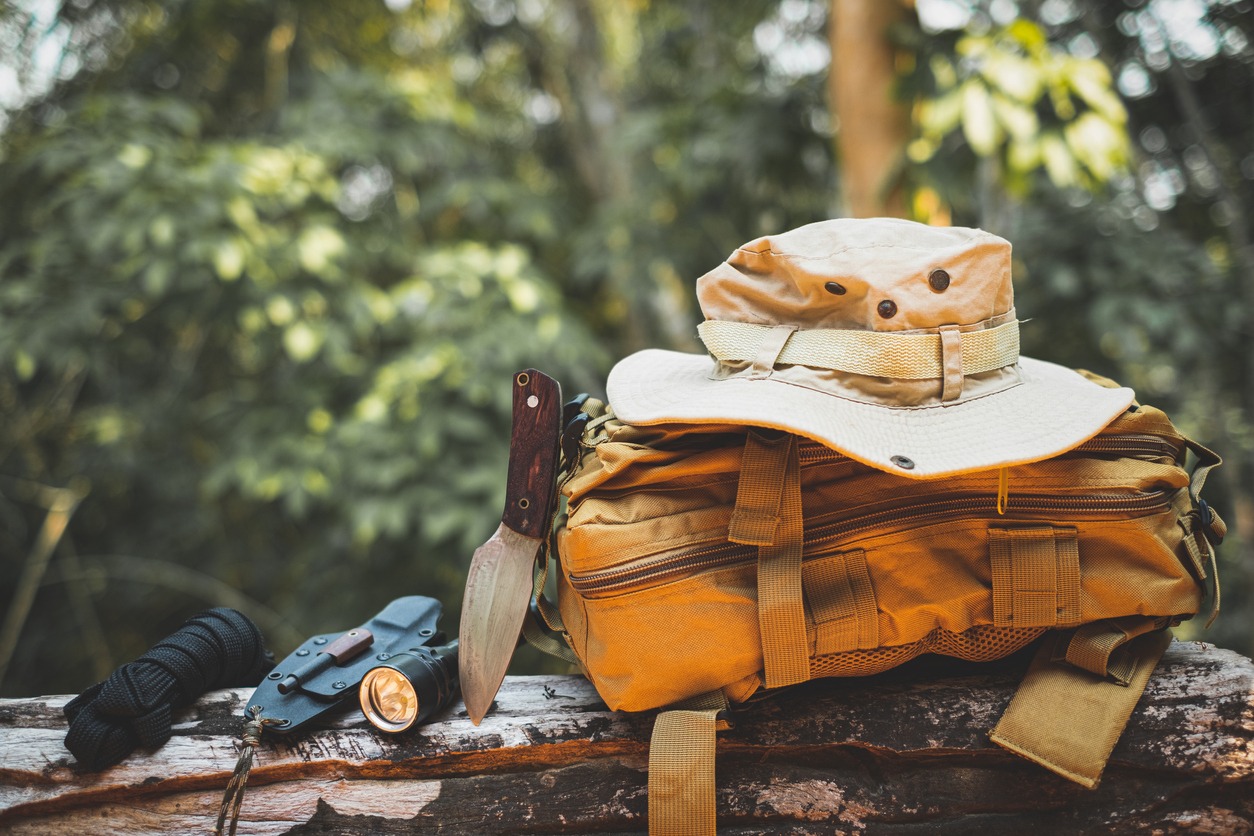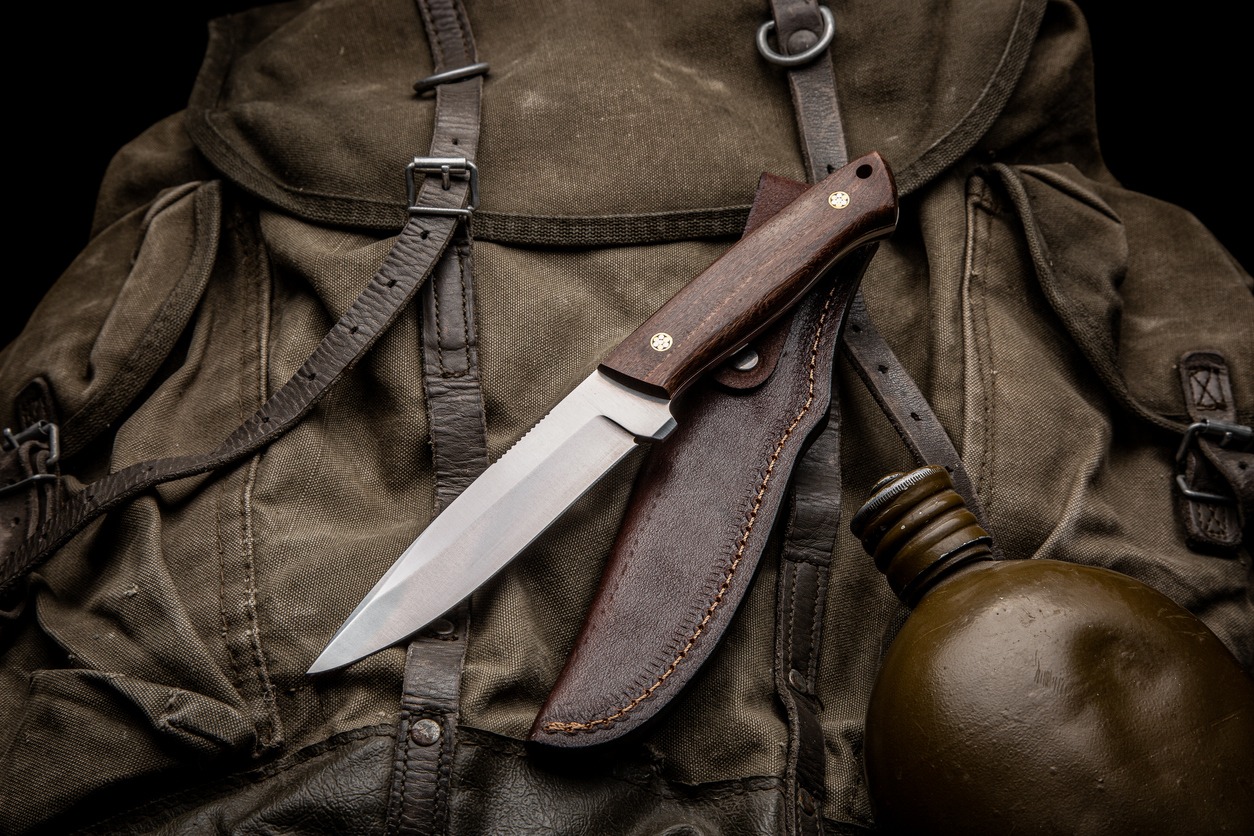Survival gear for hobbyists consists of necessary instruments and items that can be used for preparing for emergencies, outdoor activities, or natural disasters. In most cases, it includes things like a place to sleep, some clothing, the means to start a fire, a means to purify water, a means to navigate, some food, some first aid supplies, some tools, some lighting, some means of communication, some protection, and various other things. Further, to make effective use of this equipment, it is necessary to acquire knowledge of and training in various survival skills.
A survival knife is an essential piece of equipment for anyone going into the wilderness or any event. The fact that it can be used in a wide variety of different survival scenarios is what gives it its significance. When confronted with challenges in the wilderness or during unexpected circumstances, having a well-chosen survival knife can make a significant difference. A survival knife can be used for cutting, chopping, carving, hunting, or even self-defense. It is possible to improve one’s capacity to adapt and survive in environments that are difficult to predict if one is aware of the significance of a survival knife and keeps one on hand at all times.
Both the geometry of the blade and the materials it is made of are crucial to the design and functionality of a survival knife. The term “blade geometry” refers to aspects such as the shape, grind, point design, and length of the blade, whereas “blade materials” refers to the type of steel, the degree of hardness, the resistance to corrosion, the tang construction, and the heat treatment. The performance of a survival knife in terms of cutting, its durability, and its adaptability to a variety of tasks and environmental conditions are all determined collectively by these characteristics.
The Fundamentals of Survival Knife Anatomy
The anatomy of a survival knife is comprised of several essential components, which, when taken together, determine the knife’s ability to function and the survival situations in which it can be useful. The following is a rundown of the primary components that make up the anatomy of a survival knife:
1. Blade
The blade, which is the most important component of the knife, has the following characteristics and functions:
- Edge – The part of the blade that has been sharpened and used for cutting.
- Point – The point of the blade can be designed into a variety of different shapes, depending on the intended use.
- Spine – The top edge of the blade that has not been sharpened.
2. Tang
The portion of the blade that extends into the handle is referred to as the “tang.” It can have either a full tang, which would extend the entire length of the handle, or a partial tang, which would only extend halfway into the handle. In most cases, knives with full tang construction are more dependable and long-lasting.
3. Handle
The user can get a grip on the device thanks to the handle, which frequently includes features such as textured scales or an ergonomic design to improve comfort and grip.
4. Guard
There is a guard that goes between the blade and the handle on some survival knives. This guard prevents the user’s hand from accidentally sliding onto the blade while they are using the knife.
5. Pommel
The butt or end of the handle is referred to as the pommel. It can have a flat, rounded, or pointed shape, and it can be utilized for a variety of tasks, including hammering and breaking glass.
6. Bolster
A bolster is a substantial extension of the handle that is typically made of metal and is placed between the blade and the grip to add additional strength and stability.
7. Ricasso
The portion of the blade that is closest to the handle and is not sharpened is called the ricasso. It is possible to use it as a finger placement guide for various cutting activities.
8. Choil
The choil is a small area on the blade that is either notched or curved and is located near the heel. This area allows for a more controlled grip and more precise cutting.
9. Lanyard Hole
Many survival knives have a hole in the handle or pommel where a lanyard can be attached. This allows the knife to be secured if it is dropped or otherwise misplaced.
10. Serrations
Some survival knives have serrated sections of the blade, making it easier to cut through tough materials like rope or fabric.
It is essential to have an in-depth knowledge of the anatomy of a survival knife to choose the appropriate tool for a given set of requirements and responsibilities. Users should choose a knife that aligns with their requirements and preferences to maximize their chances of survival in a given situation. Different designs and features are suited to various survival scenarios.
Types of Blades
There are many different types of blades available for survival knives, and each one is designed for a distinct set of activities and predicaments. The following is a list of some common types of blades that can be found in survival knives:
1. Drop Point
This is one of the blade shapes that has the most potential applications. It has a spine that is lowered and not sharpened, but it leads to a point that is quite sharp. The edge is slightly curved. Cutting, slicing, and carving are some of the many applications that benefit greatly from the versatility of drop-point blades.
2. Clip Point
A clip-point blade has a section of the blade that is concave, which results in a point that is very pointed and fine. This design is suited for precise work and piercing of various materials.
3. Tanto
Tanto blades have a flat grind and taper to a sharp point at the very tip. They are renowned for their strength and perform exceptionally well when it comes to piercing, cutting tough materials, and prying open hard surfaces.
4. Spear Point
Because spear point blades have points and edges that are symmetrical with one another, they are well suited for thrusting and stabbing motions. They have a wide range of applications and can cut a variety of materials.
5. Serrated
A portion of the blade on some survival knives is serrated, which means it has small teeth that are jagged and often located near the handle. It is possible to sharpen serrated edges, but it may take more effort. Serrated edges are useful for cutting through fibrous materials such as rope.
6. Trailing Point
The leading edge of a trailing point blade is curved and upswept. They are typically found on hunting knives because of their superior performance in slicing and skinning tasks.
7. Sheepsfoot
Sheepsfoot blades have a straight edge with a rounded, unsharpened spine, which makes them more suitable for tasks that require pushing or cutting without the risk of accidentally piercing something. Carving and cutting rope are two examples of useful activities that can be accomplished with these tools.
8. Gut Hook
The spine of a gut hook blade features a small hook that has been sharpened, and these blades are intended to be used for field-dressing game animals by easily opening their abdominal cavities.
9. Bowie
The large, sweeping clip point and significant belly that define a Bowie blade are its defining characteristics. They can be used for a variety of purposes, including combat and survival.
10. Wharncliffe
Wharncliffe blades have a straight edge with very little or no belly, they are ideally suited for cutting and slicing tasks that require a high level of precision. They are frequently employed in a variety of craft and utility activities.
11. Needlepoint
Needlepoint blades are thin and taper to an extremely acute point at the tip. They are masters of intricate cutting work as well as piercing.
12. Hawkbill
The cutting edge of a hawkbill blade is curved upward and forms a hook-like shape as it curves upward. They help slice and chop when working in confined areas.
The type of blade that is used is determined largely by the task at hand as well as the individual preferences of the user. Some survival knives come equipped with a variety of blades, giving the user greater flexibility to handle a wide range of scenarios. When shopping for a survival knife, it is important to keep in mind the specific activities and environments that you anticipate facing so that you can choose the blade that is best suited to those conditions.
Handle Materials
Many different materials can be used to make the handles of survival knives; each of these materials has its own set of benefits and drawbacks. When selecting a material for the handle, consideration should be given to factors such as personal preference, durability, and resistance to the effects of the elements. The following are some common materials used for the handles of survival knives:
1. Wood
Handles made of wood have an appearance that is both traditional and natural. Especially when textured or checkered, they can be easy on the hands and provide a secure grip. They may also be comfortable to hold. Wood, on the other hand, may not be as long-lasting as other materials and may need periodic maintenance, such as oil to protect it from moisture damage.
2. Rubber
Handles made of wood have an appearance that is both traditional and natural. Especially when textured or checkered, they can be easy on the hands and provide a secure grip. They may also be comfortable to hold. Wood, on the other hand, may not be as long-lasting as other materials and may need periodic maintenance, such as oil to protect it from moisture damage.
3. Micarta
Micarta is a type of composite material that can be created by impregnating alternating layers of fabric, paper, or other materials with resin. It is well-known for its water resistance, as well as its durability and grip texture. Micarta handles can withstand rough use as well as adverse environmental conditions.
4. Plastic/Polymer
Several different plastics and polymers are used to construct the handles of some survival knives. These handles are not only inexpensive but also simple to maintain and light in weight. They are typically utilized in inexpensive knives designed for survival purposes.
5. Paracord
Some survival knives have paracord wrapped around the handle. This paracord can be unwrapped and used for a variety of different survival-related activities. Handles that are wrapped in paracord offer a comfortable grip as well as additional functionality.
6. Bone
Bone handles, which are frequently found on traditional or decorative knives, can offer an appearance that is both distinctive and appealing. On the other hand, they might not be as long-lasting or as resistant to the elements as some other materials.
7. Aluminum
Handles made of aluminum are both lightweight and resistant to corrosion. They have a sleek and contemporary appearance, but if they are not properly texturized, they might not provide as much grip as other materials.
8. Titanium
Titanium handles are known for their low weight, resistance to corrosion, and exceptional tensile strength. They are frequently utilized in the production of premium and high-end survival knives.
The type of work to be done with the survival knife, as well as the user’s personal preferences, should guide the selection of the handle material. It is important to keep in mind that the suitability of a particular handle material for your purposes can be influenced by a variety of factors, including grip, comfort, the requirements for maintenance, and environmental conditions.
Tang Styles
The portion of the blade that extends into the handle of a knife is referred to as the tang of the blade. The type of tang that a knife has a significant impact on the knife’s overall strength and durability as well as its adaptability to a variety of uses. The following is a list of some common tang styles that can be found on knives:
1. Full-Tang
A full-tang knife has a blade that runs the entire length of the handle from tip to tip. This design offers the highest possible levels of strength and durability, making it ideal for use in heavy-duty applications as well as survival knives. Full-tang knives are easier to control and have a lower risk of breaking under pressure than other types of knives.
2. Partial Tang
A tang that only extends partially into the handle is called a partial tang. This type of tang is also known as a stick tang or rat-tail tang. This design can frequently be found on knives intended for less strenuous tasks or for use in decorative applications. There is a possibility that partial tang knives are not as robust as full tang knives and that they are less dependable in demanding circumstances.
3. Skeletonized Tang
A full tang can be modified into a skeletonized tang by removing some of the material from the full tang. This helps to reduce the weight of the full tang while keeping the same level of overall strength as a full tang. This style is common in knives that are lightweight and designed for tactical use.
4. Hidden Tang
The tang of a knife with a hidden tang is completely encased within the material of the handle so that it cannot be seen from the outside of the knife. This design is frequently found on traditional knives as well as decorative blades. There is a possibility that hidden tang knives do not provide the same level of strength and durability as full tang knives, even though they might be more aesthetically pleasing.
5. Push Tang
A push tang, which may also be referred to as a push-through tang, is a tang that protrudes through the handle and is held in place by a separate pommel or cap. Because of its design, this handle can have a variety of materials and styles applied to it.
The function that the knife is intended to serve should guide the selection of the appropriate tang style. As a result of their superior durability and dependability, full-tang knives are typically recommended for use in heavy-duty, survival, and outdoor settings. Knives with a partial or hidden tang are better suited for decorative or lighter-duty tasks than full-tang knives. When determining the overall quality and durability of a knife, the tang style is an important consideration to take into account.
Additional Tools and Features in a Survival Knife
Survival knives typically come packaged with a variety of additional tools and features that increase their adaptability and usefulness in a variety of settings. In situations involving survival, being outdoors, or emergencies, the utility of these tools and features can prove to be immeasurable. The following is a list of commonly found additional tools and features that can be found in a survival knife:
1. Firestarter
A lot of survival knives come equipped with their own Firestarter, which is typically either a magnesium rod or a ferrocerium rod. This enables you to create sparks that can be used to start fires even in difficult conditions.
2. Whistle
Some knife handles come equipped with a whistle that can be used in case of an emergency. In the event of an emergency or while traveling through the wilderness, having a loud whistle can be of critical importance.
3. Glass Breaker
On the very end of the handle of certain survival knives is a pommel designed to shatter glass or absorb impact. This device can be used either specifically to shatter glass windows or as an improvised impact tool.
4. Bottle Opener
Campers and people who enjoy being outdoors will appreciate the added convenience offered by survival knives that have a bottle opener incorporated into the handle or the blade.
5. Built-in Sharpeners
To keep the edge of the knife sharp while out in the field, some sheaths come equipped with an integrated sharpening stone or diamond rod.
When selecting a survival knife with additional tools and features, it is important to keep in mind both the environments in which you are likely to find yourself and your unique requirements. Although these additional tools may come in handy at times, you should make sure that the main blade is of high quality and that the knife’s overall performance and durability are not compromised in any way by the additional tools.
Tips for Maximizing the Utility of Your Survival Knife
Consider the following tips to get the most out of your survival knife and to ensure that it will serve you well in a variety of situations:
1. Choose the Right Knife
To get started, pick a survival knife that caters to your requirements and tastes as much as possible. Think about things like the type of blade, the material, the handle, the style of the tang, and the overall design.
2. Maintain Sharpness
Always remember to keep the edge of your knife sharp. A dull blade is not only less effective but also potentially dangerous. Learn how to sharpen your knife with whetstones, sharpening rods, or any other appropriate tools by reading the instructions provided.
3. Practice Knife Skills
Carving, slicing, batoning, and feathering are some of the fundamental knife skills that should be practiced regularly to increase one’s proficiency in using a knife effectively.
4. Keep it Dry and Clean
After you’ve finished using your knife, give it a thorough cleaning and make sure it’s completely dry before putting it away. Corrosion is thwarted and the condition of the blade is preserved thanks to this measure.
5. Inspect your Knife Regularly
Check your knife at regular intervals for any signs of wear, damage, or components that have become loose. A longer lifespan for the knife can be achieved through regular maintenance and timely repairs.
6. Train and Practice
Enroll in courses that teach survival skills and make sure you put what you’ve learned into practice. Training can significantly improve a person’s ability to use a knife effectively in situations that they will encounter in the real world.
Conclusion
When it comes to choosing the right knife for particular jobs and settings, having a solid understanding of the blade’s geometry and the materials it’s made of is essential. The performance of a knife as a cutter and its adaptability to a variety of tasks are both dependent on the knife’s blade geometry, which takes into account aspects such as its shape, grind, and print design. The blade materials of a knife have an effect on its durability, resistance to corrosion, and ease of maintenance. Some examples of blade materials include carbon steel, stainless steel, and alloys.
With this information, individuals are better equipped to make educated decisions when selecting a knife to meet their particular requirements. It ensures that the knife that was chosen can effectively handle the tasks that were intended for it as well as withstand the conditions that were present. Understanding the geometry of the blade and the materials it’s made out of makes the knife a more dependable and effective tool in a variety of settings, whether you’re using it for outdoor activities, in a survival situation, or just daily.
Remember that knowledge, practice, and customization are essential for outdoor adventurers and survivalists. Equip yourself with the necessary skills, practice regularly, and tailor your equipment to your specific needs and preferences. Prioritize safety, respect the environment, and wisely invest in quality equipment. Connect with others, stay informed, and adapt to changing circumstances. Outdoor hobbies and preparedness are ultimately about embracing adventure, self-reliance, and a stronger connection with nature. Enjoy the journey and the experiences that these activities provide.
